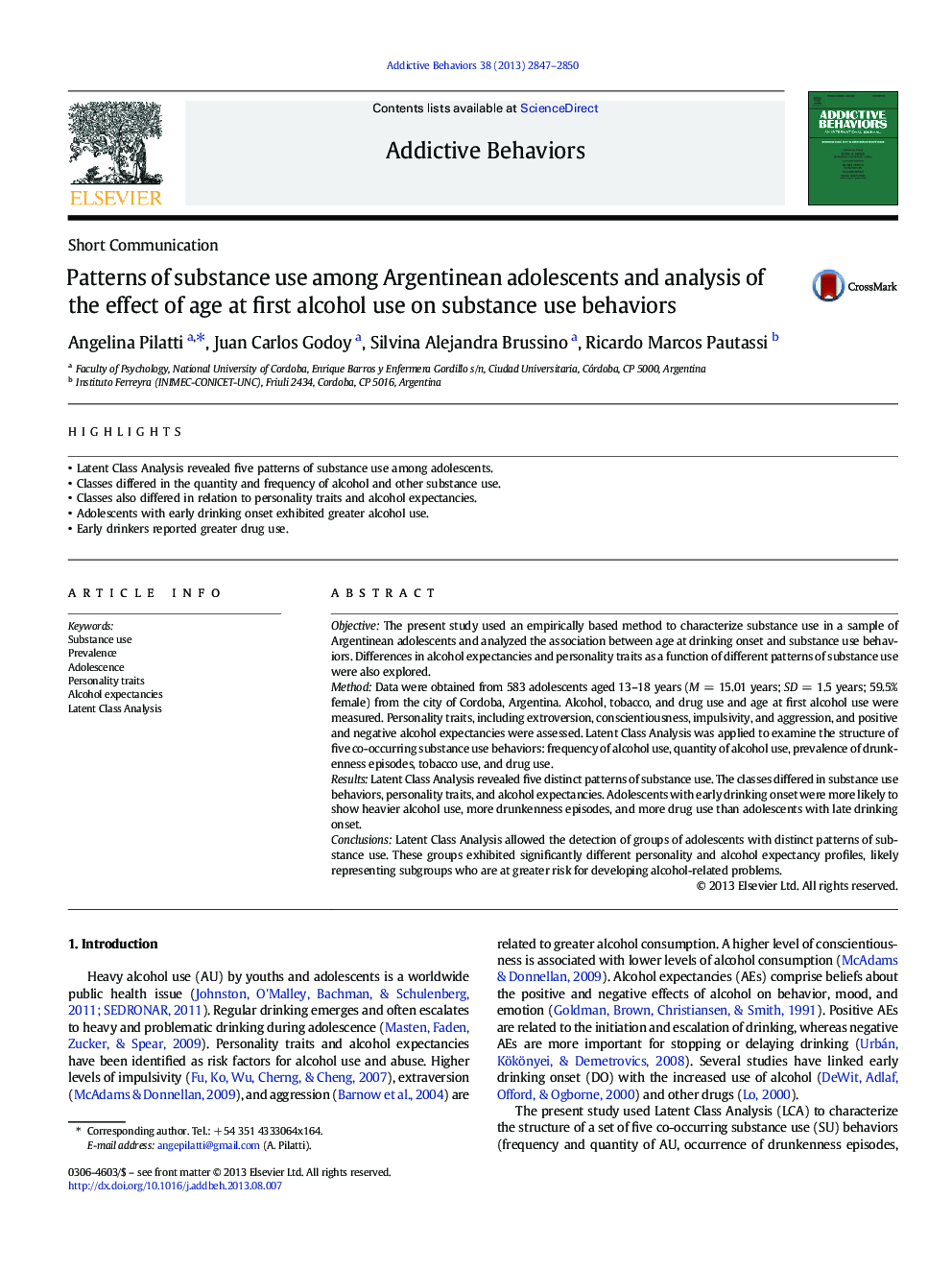| Article ID | Journal | Published Year | Pages | File Type |
|---|---|---|---|---|
| 898858 | Addictive Behaviors | 2013 | 4 Pages |
•Latent Class Analysis revealed five patterns of substance use among adolescents.•Classes differed in the quantity and frequency of alcohol and other substance use.•Classes also differed in relation to personality traits and alcohol expectancies.•Adolescents with early drinking onset exhibited greater alcohol use.•Early drinkers reported greater drug use.
ObjectiveThe present study used an empirically based method to characterize substance use in a sample of Argentinean adolescents and analyzed the association between age at drinking onset and substance use behaviors. Differences in alcohol expectancies and personality traits as a function of different patterns of substance use were also explored.MethodData were obtained from 583 adolescents aged 13–18 years (M = 15.01 years; SD = 1.5 years; 59.5% female) from the city of Cordoba, Argentina. Alcohol, tobacco, and drug use and age at first alcohol use were measured. Personality traits, including extroversion, conscientiousness, impulsivity, and aggression, and positive and negative alcohol expectancies were assessed. Latent Class Analysis was applied to examine the structure of five co-occurring substance use behaviors: frequency of alcohol use, quantity of alcohol use, prevalence of drunkenness episodes, tobacco use, and drug use.ResultsLatent Class Analysis revealed five distinct patterns of substance use. The classes differed in substance use behaviors, personality traits, and alcohol expectancies. Adolescents with early drinking onset were more likely to show heavier alcohol use, more drunkenness episodes, and more drug use than adolescents with late drinking onset.ConclusionsLatent Class Analysis allowed the detection of groups of adolescents with distinct patterns of substance use. These groups exhibited significantly different personality and alcohol expectancy profiles, likely representing subgroups who are at greater risk for developing alcohol-related problems.
